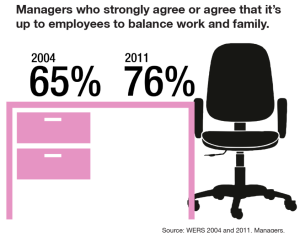Talk to any politician – of whatever party – and they will tell you their polling suggests that being tough on welfare recipients is popular with the public. So what do we consider to be ‘poverty’? What do we think is a minimum standard of living?
Recent research from PSE UK, Poverty and Social Exclusion (Attitudes to necessities: are minimum standards becoming less generous?) suggests that we set the bar relatively high when it comes to what we see as a minimum acceptable standard of living, though there is some evidence that attitudes are hardening and we are becoming less generous as living standards generally are squeezed. The study provides a fascinating insight into what, as a society, we see as the necessities of life.
The starting point for the study is that what is ‘poverty’ shifts over time. As far back as 1968 Peter Townsend wrote, ‘Individuals, families and groups in the population can be said to be in poverty when they lack the resources to obtain the types of diet, participate in the activities and have the living conditions and amenities which are customary … in the societies in which they belong.’ Townsend’s normative approach was modified in the 1980s when Mack and Lansley developed the concept of ‘socially perceived necessities’. Their approach introduces the notion that only those things perceived by 50% or more of the population to be necessities should be included in a deprivation index (eg a car is the norm – 74% of us have one – but only 56% of people think a car is a necessity). And a notion of relative poverty, shifting over time, seems to be accepted by most of us.
So, what are we currently agreed is ‘a necessity’, and how much consensus is there? What is a minimum standard of living in Britain today?
There is a lot of agreement, across gender, social class, ethnicity, geographical location and occupation about what is – and what is not – a necessity in this day and age, and the most heavily supported items relate to what traditionally have been seen as basic needs – shelter, food and clothing.
For adults, the top three items are:
- Heating to warm living areas of the home (96% of us agree that this is a necessity)
- Damp-free home 94%
- Two meals a day 91%
And for children, the top four are:
- Warm winter coat 97%
- Fresh fruit and vegetables once a day 96%
- New, properly fitting shoes 93%
- Three meals a day 93%
There is also very strong support for a range of other items relating to social participation for both adults and children:
For adults, activities relating to social obligations rank highly:
- Visit friends or family in hospital or other institutions 90%
- Celebrations on special occasions 80%
- Attend weddings, funerals and other such occasions 79%
For children, a wide range of activities rank highly:
- Child celebration on special occasions 91%
- Child hobby or leisure activity 88%
- Toddler groups or nursery or play group at least once a week for pre-school aged children 87%
- Children’s clubs or activities such as drama or football training 74%
- Many of the child items gaining high levels of support related to developmental or educational opportunities:
- Garden or outdoor space to play safely 92%
- Books at home suitable for their age 92%
- Suitable place at home to study or do homework 89%
- Indoor games suitable for their age group 81%
For adults there is also strong support for a wide range of consumer goods and for the financial resources to maintain them:
- Replace or repair electrical goods 86%
- Washing machine 82%
- Telephone 77%
- Household contents insurance 70%·
But there is some evidence that the harsher economic climate is having an impact. In all previous surveys, a ‘holiday away from home not staying with relatives’ has been seen as a necessity for both adults and children, yet it is no longer seen as a necessity for adults; and being able to spend a small amount of money on yourself has dropped from 61% in 1999 to 42% in 2012, when the survey was conducted.
For children, 70% of us think access to a computer and internet is necessary for homework, but only 8% of the public thinks an mp3 player or i-pod is a necessity and only 6% designer or brand name trainers.
Another shift is the continuing hardening of attitudes amongst younger people, it looks as if younger people are rather less generous than older people (a trend first noticed in an earlier survey in 1999, and the gap has widened in this survey).
There is a lot more fascinating data in this survey – check it out!




Subscribe with…